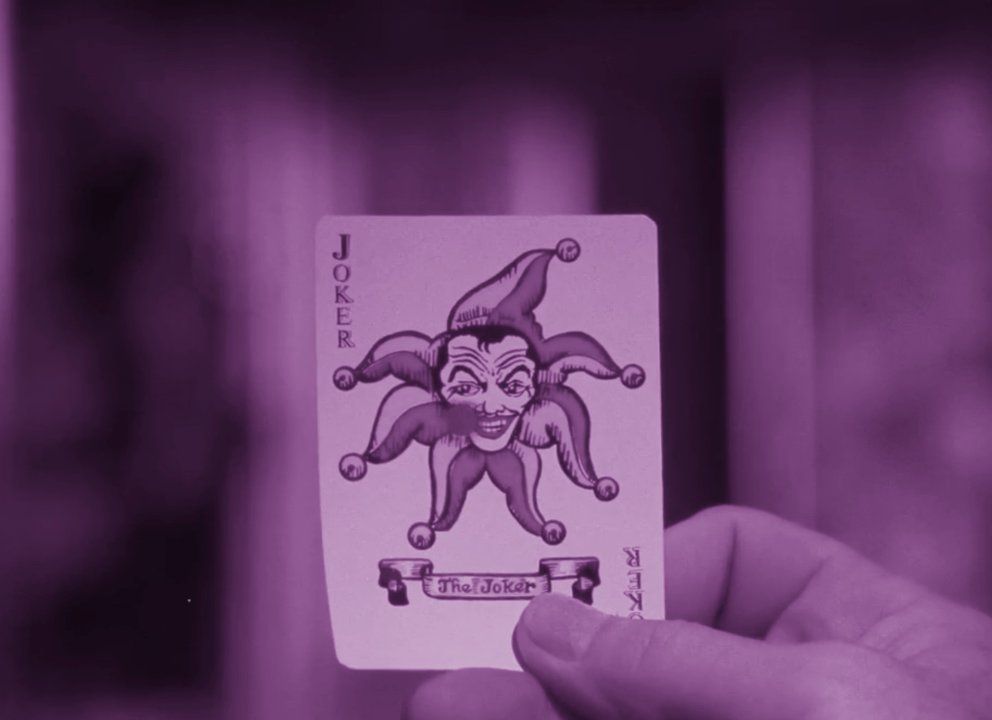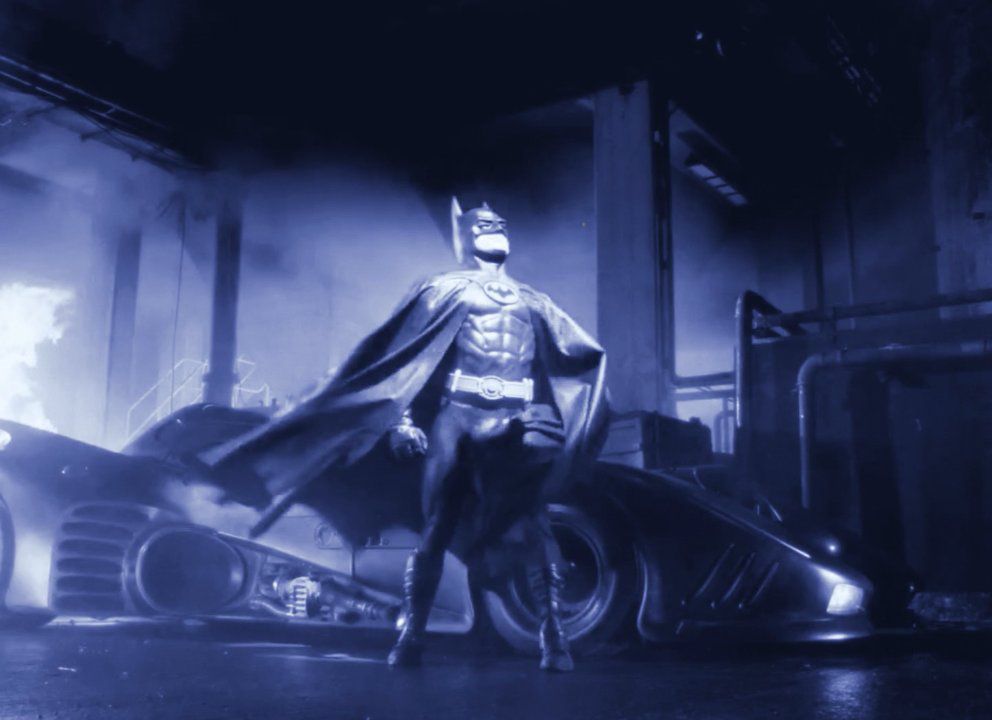It’s probably safe to assume by now that Tim Burton’s Batman needs no introduction. Released in 1989, the feature-length adaptation of the Dark Knight starring Michael Keaton and Jack Nicholson stands shoulder to shoulder with Richard Donner’s 1978 Superman as one of the most influential superhero movies of its era, arguably eclipsing the latter in the scope of its impact on popular culture, superhero or otherwise.
The popularity and success of Burton’s film gave rise to Batman: The Animated Series, and inspired retroactive changes to the comics’ depiction of Gotham City as well as its own limited comic series more than 30 years after its release. Mow, someone went and re-edited Burton’s gothic superhero opus into a silent movie, complete with color-tinted cels, artificial film grain, and stylized intertitles. And wouldn’t you know it — it’s still fantastic.
Ben Crew, a Chicago-based documentary filmmaker who went viral last year for his fan-made script “Muppets Present The Great Gatsby” last year, is the man behind the re-edit. “I’ve always been a big fan of Batman and of Burton, his movie Ed Wood is my favorite film of all time,” Crew told Polygon over email. “I love films that inspire you to seek out other films and Tim Burton’s Batman was that for me. Before I even knew how to use editing software, I thought, ‘Wouldn’t it be cool to watch Batman as a silent film?’”
Image: Benjamin Crew/Warner Bros.
Although the edit took a month to complete, the first eight minutes were completed and put online in October of 2019, to little attention. “It wasn’t until I wrote “Muppets Present The Great Gatsby” that I realized my ability to go viral working with properties that I loved,” Crew told Polygon. “The response I got from Muppet fans with Gatsby encouraged me to make this idea happen for Batman fans.”
The full edit was completed in February of 2021 and put online, again garnering little response. It wasn’t until this past week that Crew’s silent film edit of Batman went viral, which Crew credits to Twitter. “I never shared the Batman edit to Twitter until recently because I was frankly still figuring out how to utilize Twitter at the time,” Crew told Polygon. “When I did finally share the edit on Twitter, it was in response to a prompt tweet. I hadn’t planned on going viral which I think is something people really respond to. I just wanted to share my love of silent cinema and Burton’s film.”
As to why he feels Tim Burton’s work, in particular Batman, is so ripe for the silent film treatment, Crew points out the prominent influence of German Expressionism on the visuals of Burton and production designer Anton Furst’s gothic, Art Deco depiction of Gotham City, as well as other nods to that era. “Its influences are so clear,” Crew told Polygon. “Right down to Christoper Walken’s Batman Returns character being named Max Shreck after the actor who played Count Orlok in Nosferatu.”

Image: Benjamin Crew/Warner Bros.
Ultimately however, Crew attributes Danny Elfman’s score as the key ingredient to the successful transformation of Burton’s Batman into a silent film. “I believe that Batman and Batman Returns are two of the greatest film scores of all time,” Crew told Polygon. “This edit works so well because it allows you to experience Elfman’s genius without any words or sounds over it. Too many scores today just serve as background noise. Every note of this score is precise and timed exactly to compliment the action and characters. The visuals and music serve each other in the most beautiful way.”
That beauty certainly comes across in the edit itself, which pushes Elfman’s score to the forefront of attention while creatively incorporating several tracks from Prince’s soundtrack album that had not previously appeared in the film itself. And yes, don’t worry— the infamous “Partyman” scene where Joker and his gang ransack the Gotham Museum remains intact.
Throughout the entirety of the silent film re-edit of Batman, only one instance of dialogue sound is used— that of the Joker laughing— a creative choice which Crew credits to one of the key influences behind the project as a whole. “The biggest inspiration for me while editing [Batman: The Silent Motion Picture] was Paul Leni’s The Man Who Laughs, which is actually the film that inspired the design of the Joker,” Crew told Polygon. “I made that decision because The Man Who Laughs was released in 1928 during the period in which motion pictures were transitioning to sound, and while it is a silent film, the Movietone sound system played the score in addition to some sound effects and a song.”

Image: Benjamin Crew/Warner Bros.
Since going viral on Twitter, Batman: The Silent Motion Picture has seen a tremendous response from Batman fans and film enthusiasts alike, with several independent venues across the country having reached out to Crew to facilitate screenings of his re-edit. Crew himself has already expressed intent to give Batman Returns the same silent film treatment. As far as concerns of a potential legal response from Warner Bros., Crew maintains that the edit will find its audience— one way or another.
“Local theaters will need approval from Warner Bros., but they know that this already has a demand,” Crew told Polygon. “So if I’m going to say anything to Warner Bros., it’s that I loved celebrating the character and I hope they join me in that celebration of not just Batman, but the history of cinema. There is a big audience of fans who would love to see Batman: The Silent Motion Picture in special theater screenings.”
Batman: The Silent Motion Picture is available to stream on the Internet Archive.

